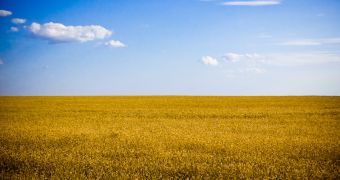After the collapse of the Soviet Union in 1991, vast stretches of land in the former Communist country were abandoned as agriculture became less and less profitable. Now, authorities and scientists alike are faced with a dilemma – either use these lands to plant crops, or leave them alone to act as carbon sinks.
Both uses are equally important, and both have the potential to change a lot of lives. Turning abandoned lands back into croplands would be a long-term project, since it would take a lot of money for such large stretches of land to be treated in such a way that they become productive again.
According to a study published earlier this month, around 25 percent of croplands in western Russia, Belarus, and Ukraine have been abandoned in the past 22 years, an area of about 31 million hectares. As a reference point, this area is roughly equal to that of Poland, scientists say.
Previous estimates by the United Nations Food and Agricultural Organization (FAO) had suggested that the abandoned land covered an area three times smaller, but those estimates were proven to be wrong, Nature reports.
Due to the fact that the Soviet Union wanted to become self-sufficient from an agricultural point of view, orders were given to plant even less fertile grounds. While production for very fertile soils is still high, the overall amount of products being harvested has declined sharply since 1991.
If replanted, the abandoned areas could produce in excess of 90 million tons of grain yearly, roughly 35 million tons more than Russia's wheat production for this year. These amounts could also contribute to covering parts of the 3 billion tons of cereals and feeds the world is estimated to need by 2050.
The drawback to cultivating these lands is that the vast amounts of carbon dioxide locked in soils and plants will be released back into the atmosphere. Scientists led by geographer Florian Schierhorn estimate that the abandoned areas hold around 470 million tons of carbon.
The expert is based at the Leibniz Institute of Agricultural Development in Central and Eastern Europe in Halle, Germany. He says that this amount of carbon is around one third of the total CO2 emissions released by the United States last year.
Therefore, the question arises whether or not it would be better to leave these lands alone, to act as carbon sinks and capture and store even more CO2 over the coming years. The atmosphere and oceans could definitely use the help, and the extra capacity could help mitigate global warming for a few years.

 14 DAY TRIAL //
14 DAY TRIAL //